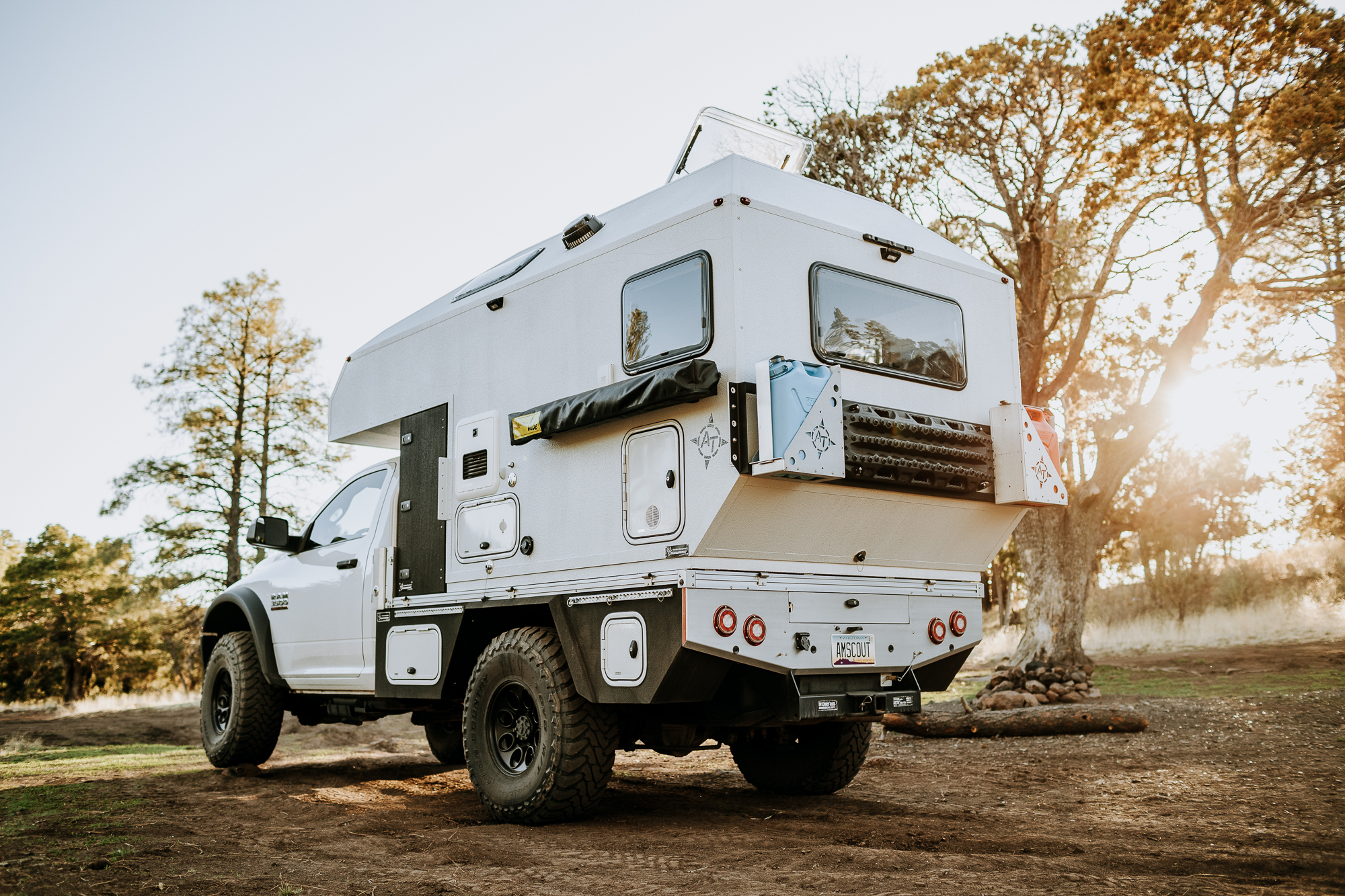Photography by Richard Giordano
While I’m tucked into the warm camper bed, the wind howls outside. I don’t have to worry about an unattended ground tent liberating itself from the ground and tumbling away, nor any rooftop tent canvas flapping. I’m enveloped in a motionless cocoon, like a caterpillar protected against the elements. Ponderosa pines sway in the wind outside the portal window, stars shining bright during the cold night. I chuckle to myself, smiling in the dark. So, this is what it’s like to sleep in a hard-sided camper. What luxury.
For the past 20 years, Arizona-based AT Overland Equipment has offered solutions such as truck toppers, campers, storage accessories, and more for off-road and overland enthusiasts alike. There is no doubt the company has been foundational to the North American overland market; the popularity of the AT truck topper line is evident both online and in the wild.
AT Overland was the first to create a lightweight independent suspension trailer manufactured in the US, so CEO and founder Mario Donovan is no stranger to developing unique products. His desire to build the ultimate hard-sided truck camper for long-term overlanding was driven by deficiencies he noticed in the market. Slide-in campers tend to be heavy and without sufficient storage for four-season travel, so Donovan collaborated with Tern Overland to design and build AT Overland’s latest offering, the Aterra XL flatbed camper.
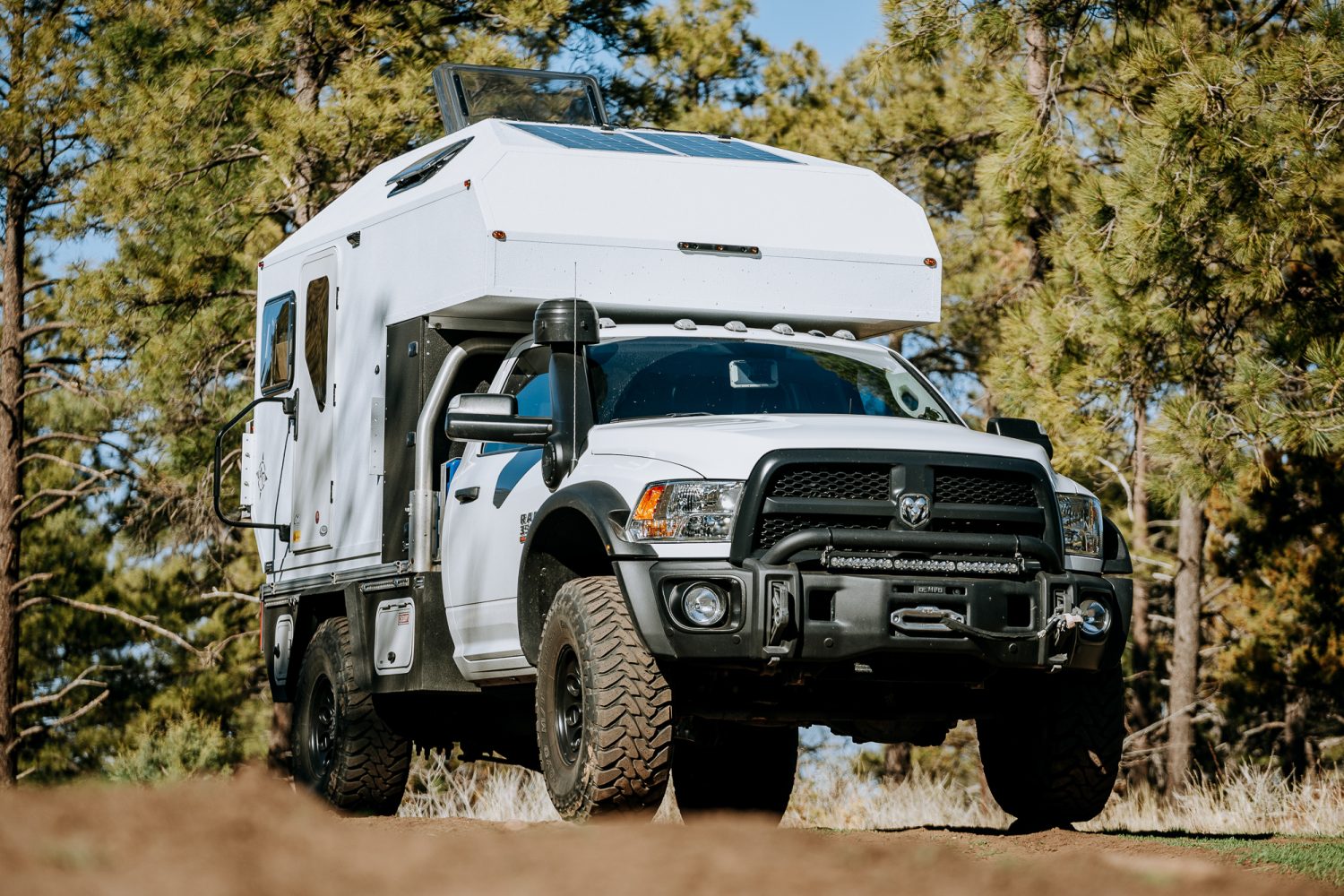
A lightweight, fiber-reinforced thermoplastic honeycomb composite cell with plenty of storage space, a king-size bed, and comfortable dinette, the Aterra is fashioned with all of the creature comforts one desires in a hard-sided living space. Plus, its geometrical shape is designed to withstand the bashings of terrible roads no matter where you are. Intrigued, we took the prototype, mounted to Mario’s burly Ram 3500 Chassis Cab and custom flatbed, out for a couple of nights in the woods to see what it’s all about.
Aterra Initial Impressions
Mario’s Ram rests on 40-inch Toyo Open Country M/T tires, so I used my rock-climbing skills to hoist my five-foot-three frame into the camper. Fortunately, the handrail was sturdy, but those with pain or mobility restrictions should consider bringing a small ladder or steps. The interior is finished with a UV-resistant polyurea coating and an upholstered ceiling. My only gripe here is a small and seemingly fussy one—a lighter-colored upholstery would make the space even brighter. From inside the camper, a 360-degree view is not possible (there are no windows on the front), which could be important to some for security reasons. However, upon first impression, I was delighted by the ample amount of natural light streaming into the camper. The opportunity to bring the outside in, while being protected from the elements, feels decadent.
Dinette and Kitchen
We rolled over some large bumps and ditches on the way to camp, but I was happy to see that everything was still in its place, including the dinette cushions, mattress, and bedding. The dinette area exhibits an intelligent use of space as it offers extra storage and can transform into a bed, Sagiv shower, or a place to do your business as a Wrappon Trekker waterless toilet system is kept beneath one of the dinette seats. In the kitchen area, a Dometic two-burner sink/stove is fitted to the bamboo countertop, which provides enough space to chop, dice, slice, and wash when the bed is in the locked position. There are 30 gallons of freshwater available but no greywater tank, so keep that in mind.
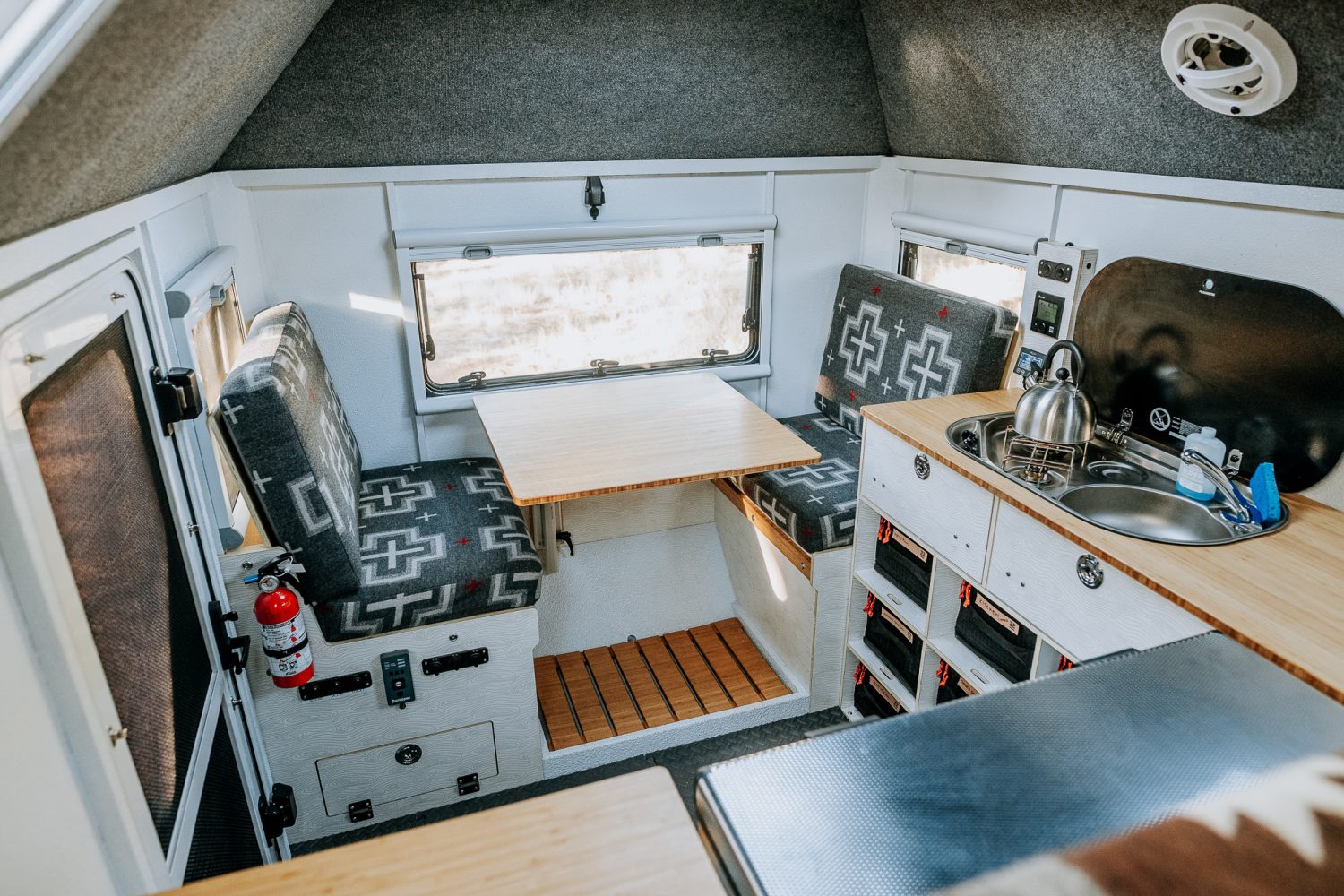

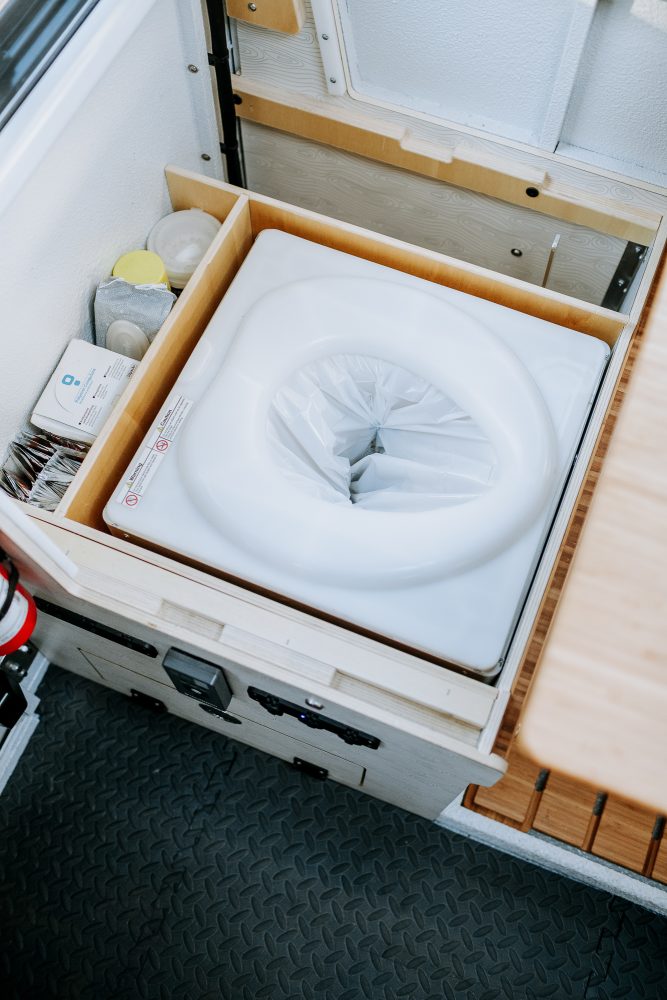
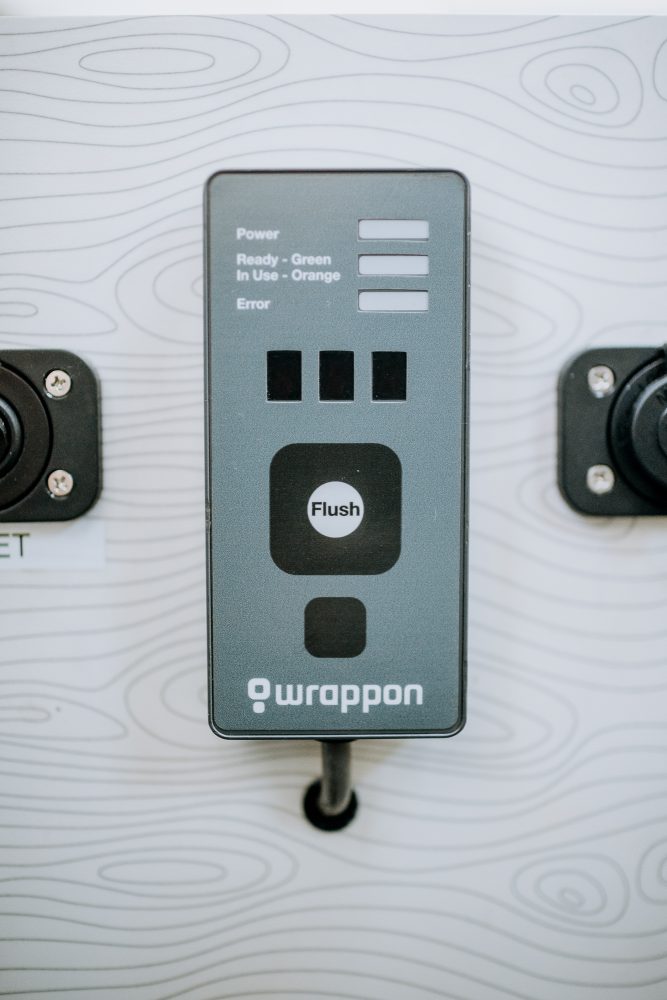
We lost some counter space when the bed was pulled out fully; it was just enough for my bedtime lotions and potions, but the setup seemed most functional when the bed was “put away.” For those traveling as a couple, early risers won’t have as much counter space or any access to the cavernous National Luna 90-liter dual-zone fridge/freezer. But access to the sink (and on-demand hot water via the Truma AquaGo heater) and burner is generous, so the smell of coffee percolating (and initiating the Truma VarioHeat Comfort heater on chilly mornings) should quickly arouse your partner from their slumber.
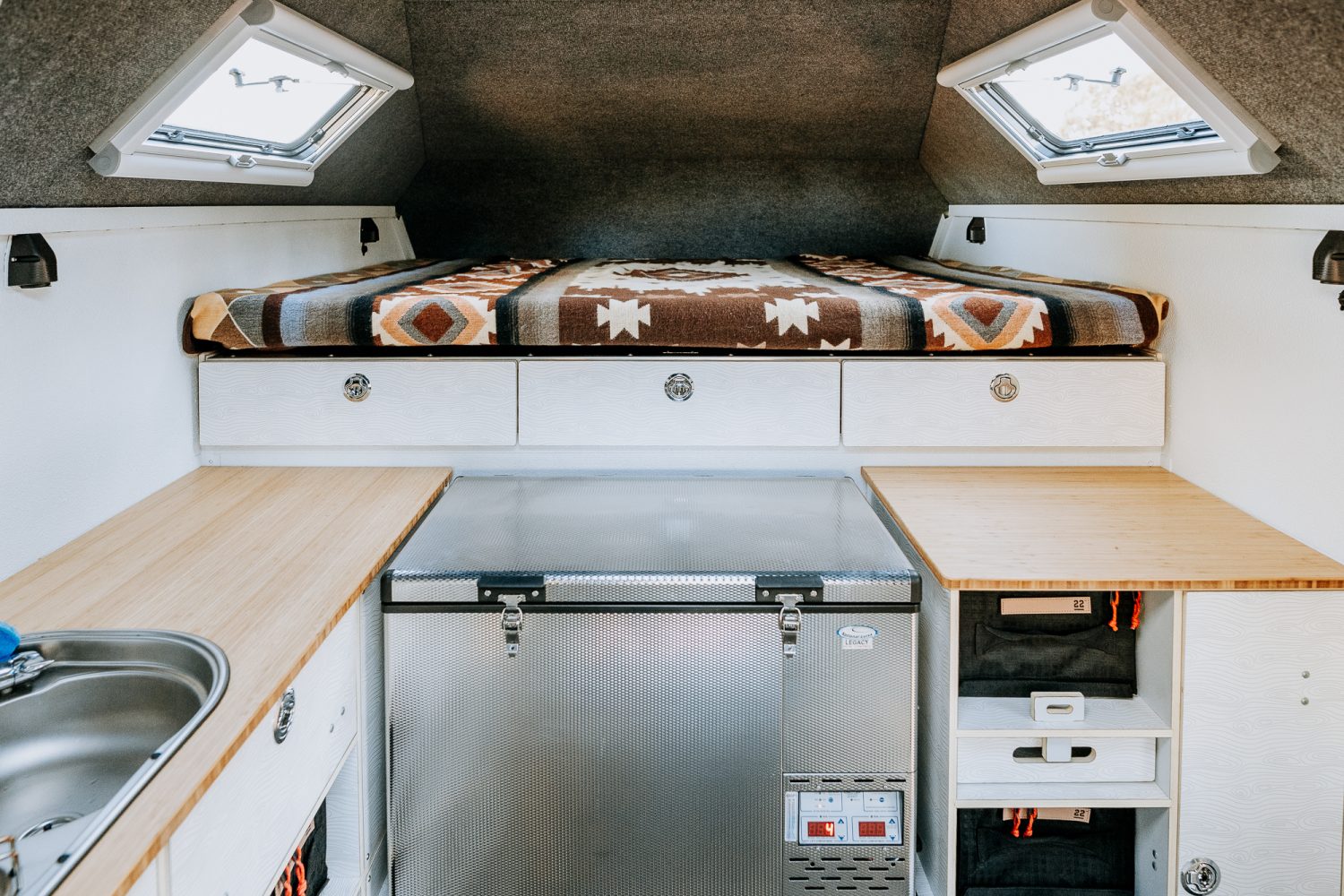
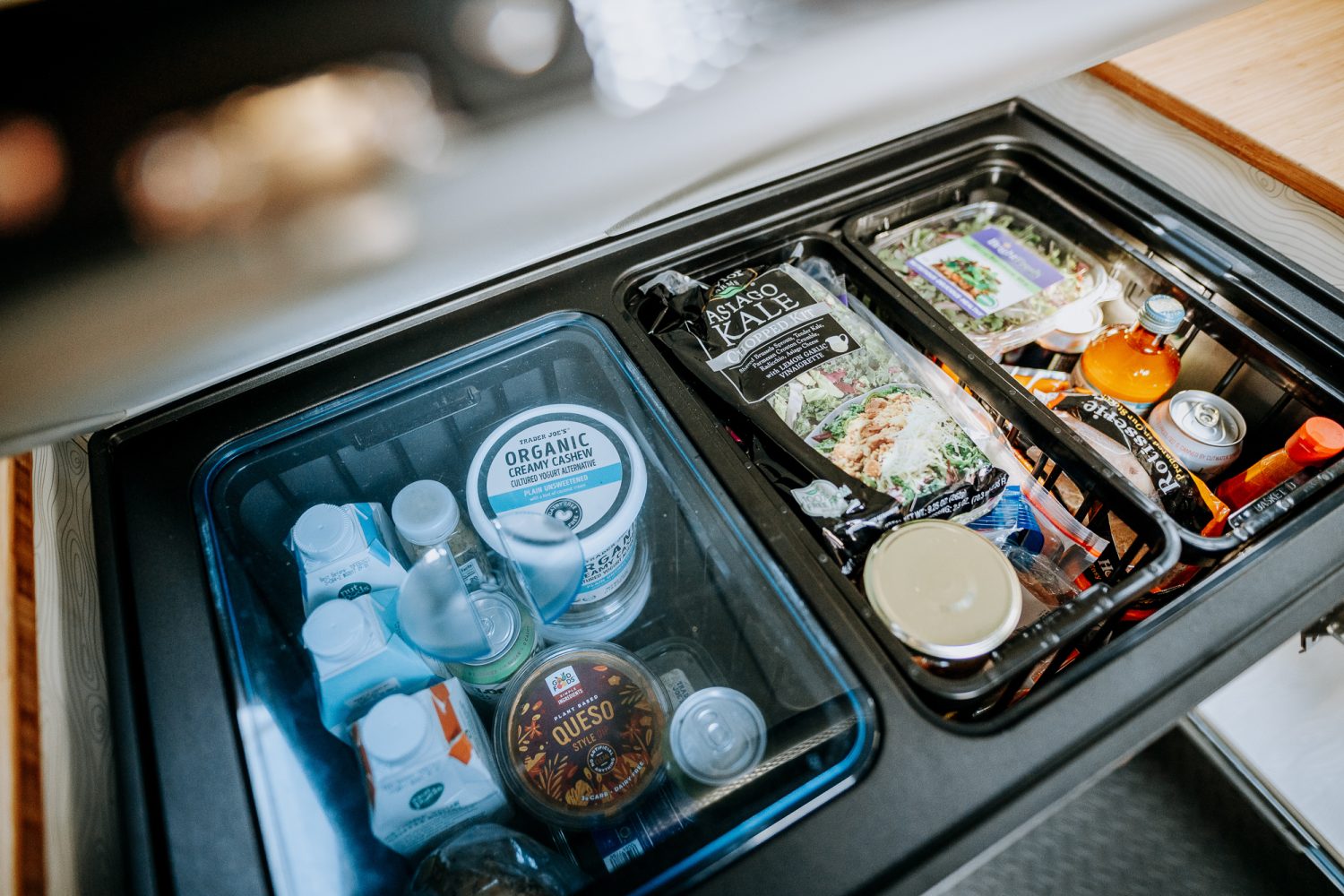
Electrical and Solar
A 105-amp-hour lithium battery and 400 watts of solar are complemented by a National Luna 40-amp DC to DC charging system with an integrated MPPT solar controller and automatic vehicle charging disconnect. Whether creating dance party or mood lighting, dimmable interior and exterior scene LEDs are controlled via manual toggle switches or the easy-to-use Garmin Power Switch app. Five double USB and four 12-volt sockets are found throughout the camper. The Aterra is not equipped with an inverter; however, one could be permanently installed, or a small version could be plugged into one of the 12-volt sockets. Our lifestyle demands a collection of devices that aren’t charged via USB (computers, camera chargers, hair curler/straightener), so in a perfect world, we would definitely add an inverter.
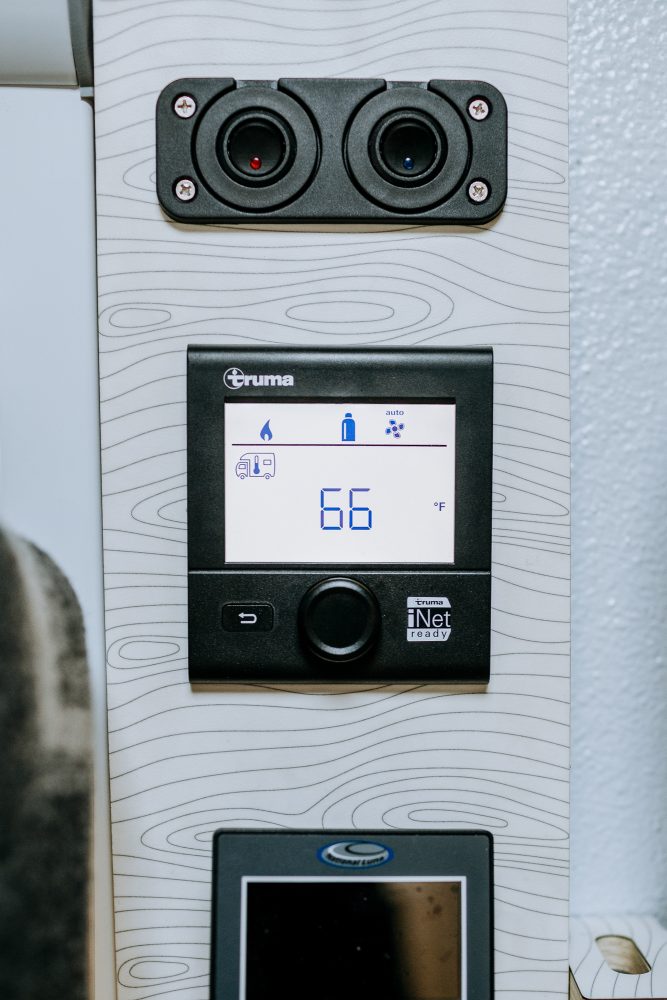


Storage Solutions
While the truck camper market has focused on the needs of the weekend warrior (and rightfully so as they make up most of the customer base), Donovan has considered the desires of multi-season, long-term, remote travelers. To test out the Aterra’s storage capacity, we brought all of our clothing, a ton of food, a yoga mat, our electronics, and many other odds and ends. Kitchen and miscellaneous items are stored in Step 22 Stingray cabinet storage cubes, while clothing and shoes can be organized in three under-bed storage drawers (I’m in love!), three hidden under-bed compartments, a hanging closet, and a shoe cubby. Mario has set this camper bed apart from the competition by making under-bed storage drawers easily accessible when the bed is pulled out completely; other beds require you to lift the bedding to grab your favorite pair of jeans, books, etcetera.
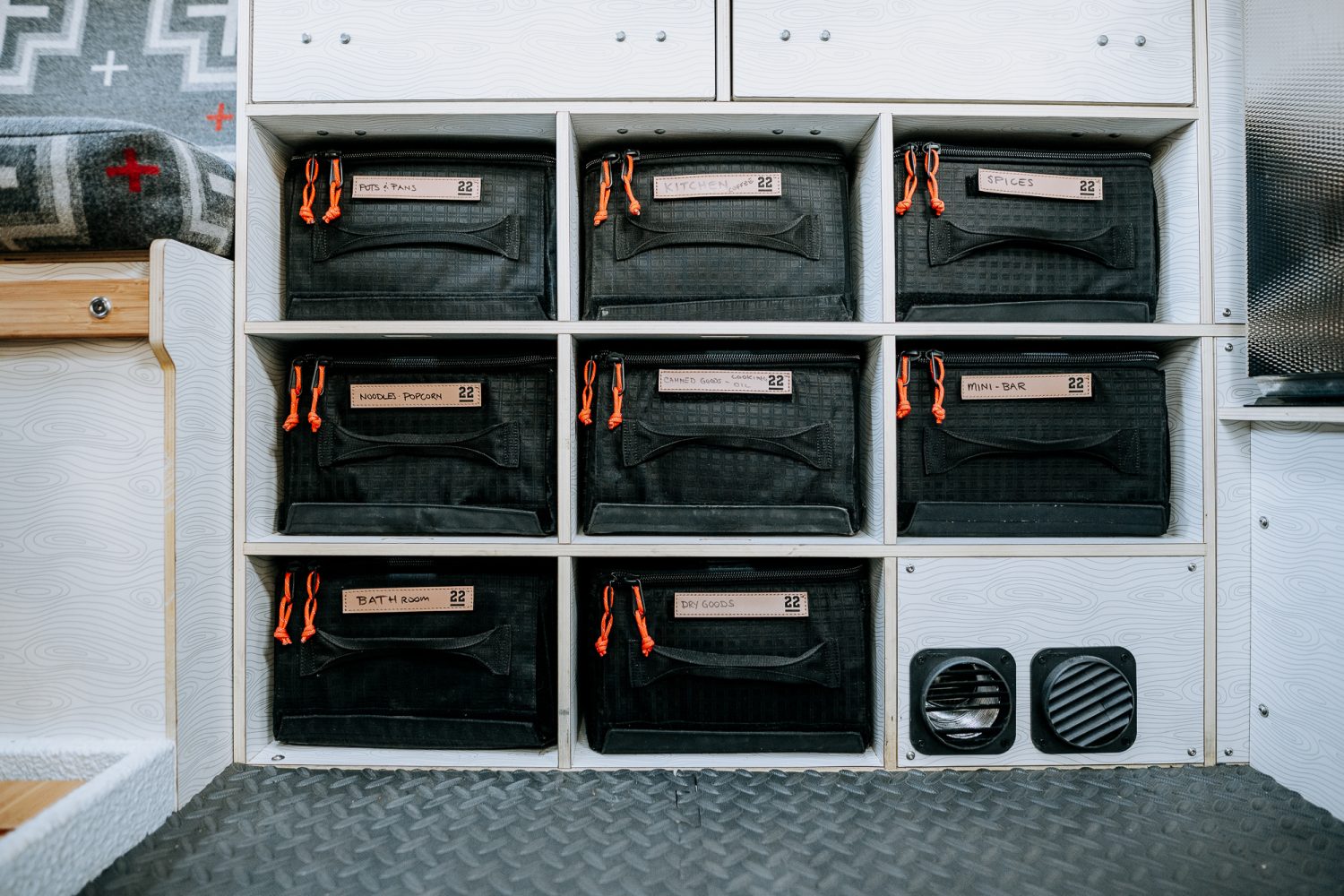
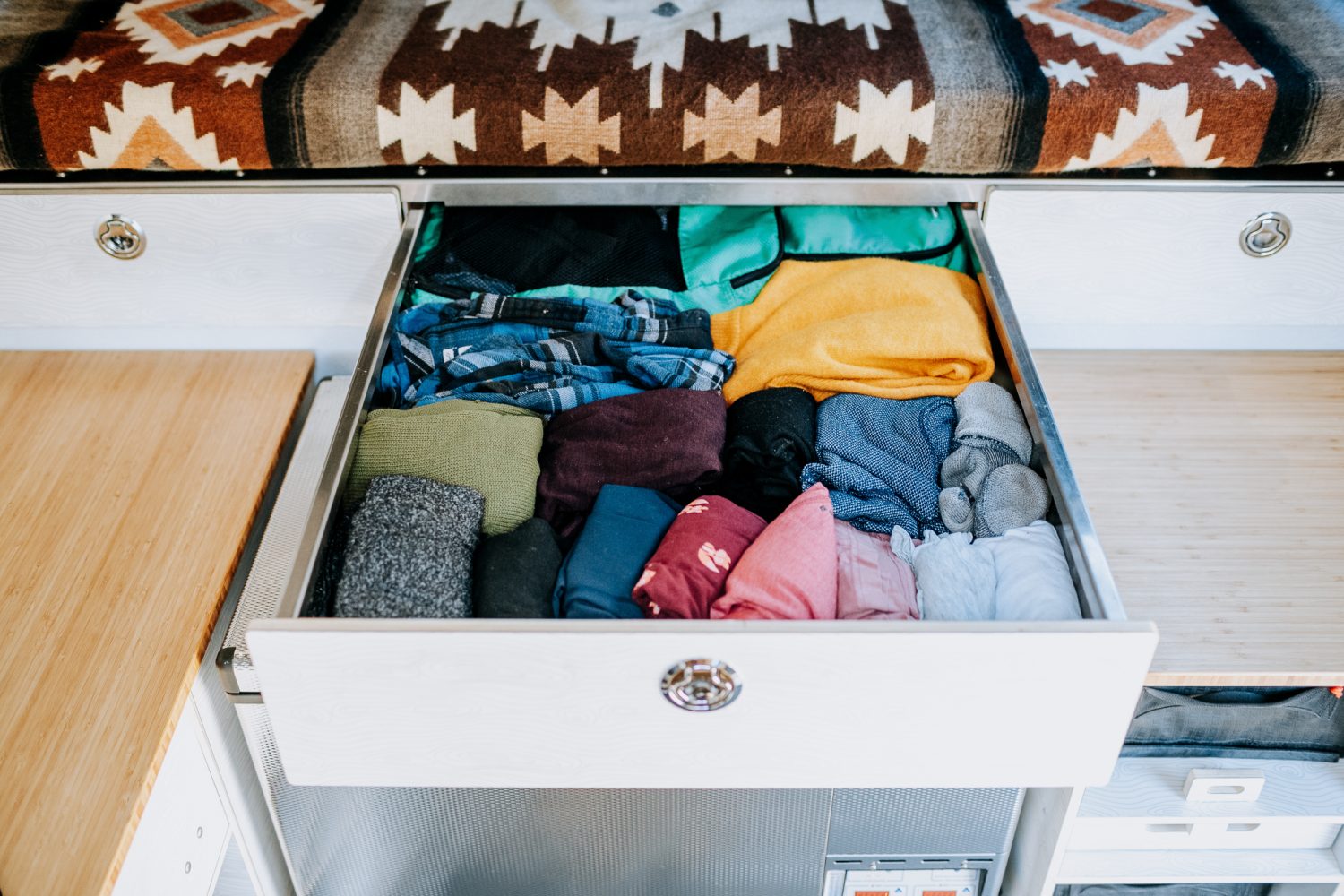
Now that you’re dreaming of the glorious storage space, let’s talk about the weight of the Aterra camper—at 1,250 pounds, the published base model weight is revolutionary. Donovan and his team have even managed to lighten it up by another 70 pounds. As such, the camper is designed for half-, three-quarter-, and one-ton full-size pickup and cab chassis trucks with 6.5-, 6.75-, and 8-foot or longer flatbed trays (AT Overland notes that half-ton trucks may require augmented rear suspension).
Future Generations
I tested the prototype version (“Generation One”) of the camper, which was equipped with several optional features, including a second battery, fuel can, Maxtrax, and external shower curtain options. As it often goes, changes have been made to improve future generations. Dinette windows were raised four inches to improve the view when seated, and indoor/outdoor fabric now covers the cushions and mattress. In addition, pockets have been added to secure the mattress in one place while driving on rough roads. Generation Three also offers an optional DC power driven 6,000 Btu split air conditioning unit and an additional 105A battery. Finally, users can now transform the dinette into a sofa, bringing the comforts of home to a smaller space.
Overall, the Aterra XL flatbed camper ticks all the boxes. It’s lightweight, well-laid-out, offers plenty of storage space, premium appliances, and is built to withstand harsh conditions and the test of time. I would argue it is also competitively priced. Now, if you will excuse me, I’m off to convince Mario to hand over the keys so I can take this baby out for another sleep beneath the stars.
Pricing starts at $69,000 (built to order) | atoverland.com
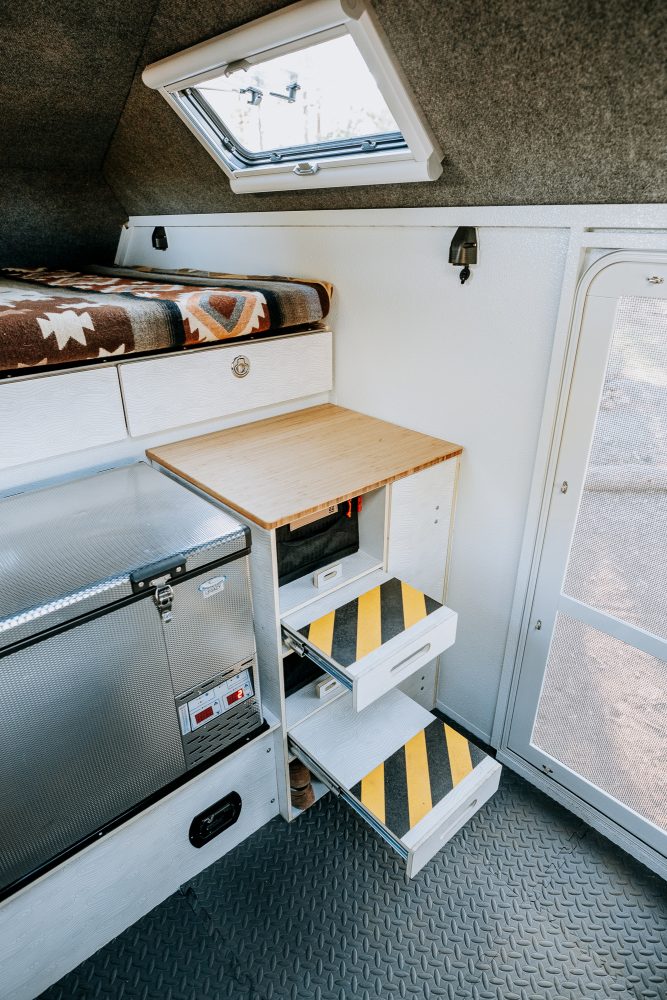
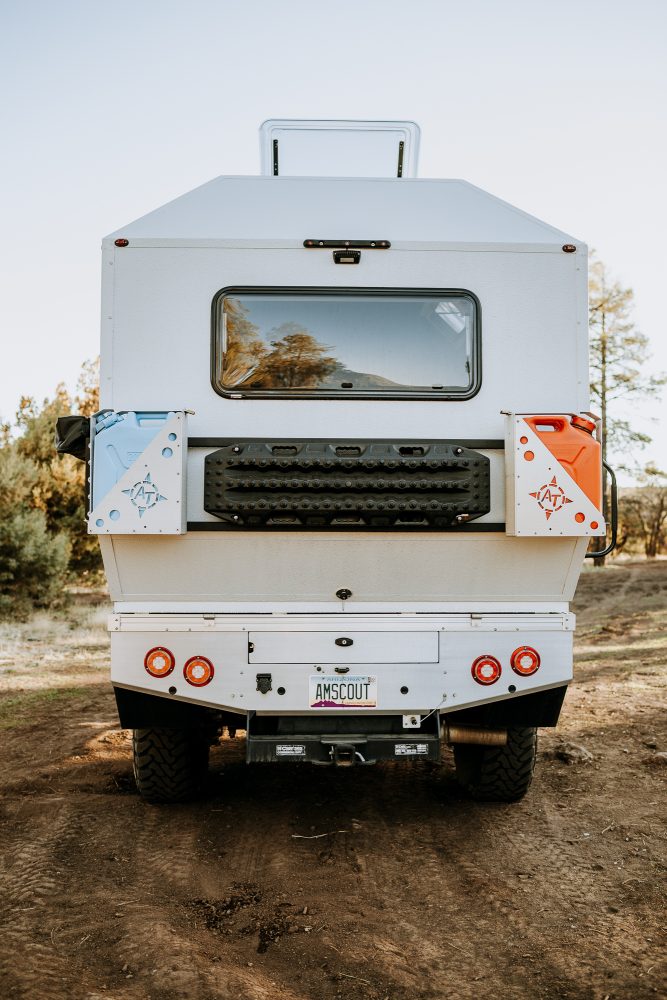
Our No Compromise Clause: We carefully screen all contributors to ensure they are independent and impartial. We never have and never will accept advertorial, and we do not allow advertising to influence our product or destination reviews.
Read: AT Overland Aterra XL: The Composite Camper Revolution Continues


